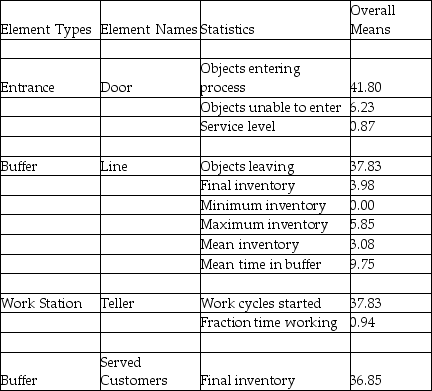Scenario E.1
SimQuick is being used to simulate the following bank process:

Customer arrivals at the Entrance Door of the bank with an average time between arrivals of 2.5 minutes. The Line Buffer holds 6 customers. If a customer arrives and the buffer line is filled, the customer leaves. The Work Station Teller's processing time per customer is normally distributed, with a mean of 3.0 minutes and a standard deviation of 0.5 minutes. The Served Customer Buffer in the flow chart is used to count the number of customers processed during the period simulated. A 2-hour period was simulated.
The SimQuick simulation is run, and the results are as follows:

-Use the information in Scenario E.1. Approximately what percentage of total customers who arrived during the 2-hour period found the buffer full and were not able to enter?
Definitions:
Heuristics
Simple, efficient rules or methods that people often use to form judgments and make decisions, based on limited information.
Utility-Maximizing
A principle or approach in economics that suggests individuals allocate their resources in a way that maximizes their satisfaction or utility.
Heuristics
Mental shortcuts or rules of thumb that simplify decision-making processes, often at the cost of perfect accuracy or thoroughness.
Self-Serving Bias
A common tendency for individuals to attribute their successes to internal factors while attributing failures to external factors.
Q7: _ occurs in a linear programming problem
Q10: Use the information in Table J.15. What
Q22: Stu whips up a schedule based on
Q24: This OC curve represents a sampling plan
Q39: A pilot work study has been conducted
Q60: _ is the risk that the sampling
Q94: Use the information in Table J.6. What
Q194: Referring to Table 19-2,what is the action
Q232: A tabular presentation that shows the outcome
Q305: Referring to Table 19-4,what is the coefficient